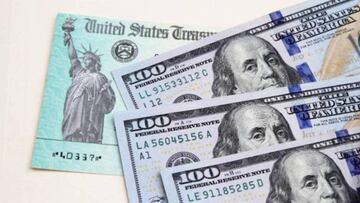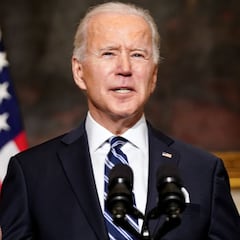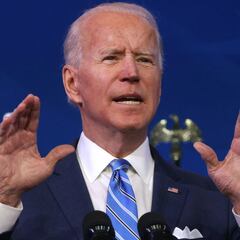Third stimulus check: how could it be different from the first and second ones?
No one knows when a third stimulus check will come nor what it’ll be like, but perhaps fewer may be eligible for the check as they could be more targeted.

At the beginning of the year the majority of voices were calling for another round of Economic Impact Payments (EIP) after just having approved a second direct payment of $600 to every eligible adult and child. The general idea was to send out a top-up $1400 stimulus check to raise the total amount to $2000. Since then, analysis of how the money was used have called into question if the funds were being used effectively to prop up the economy.
A study by Opportunity Insights, a nonprofit research organization indicated that the money from the latest round was being spent by families who earned less than $48,000 a year while those earning over $78,000 were simply sitting on the money. Furthermore, other indications show that the money might be partly responsible for the stock prices soaring, helping Wall Street, which has been doing great in the crisis, and not Main Street, which has been suffering.
More targeted stimulus checks
Biden announced his American Rescue Plan a week before his inauguration outlining a wide-ranging plan of measures to tackle the economic crisis induced by the covid-19 pandemic and the measures to slow its spread. Part of the plan included sending $1400 stimulus checks to Americans to help shore up their finances and get money into their communities. The measure, like the ones that came before, is very popular among the American public across the political divide with over three-quarters supporting it.
Related stories
However the cost of the measure and who receives the direct payments have been sticking points. Lawmakers from both parties are urging the White House for a less costly relief package that would only send stimulus payments to the most needy. Biden’s plan never stated who the checks would go to but there was broad consensus that it would follow the framework of the previous two EIPs. He has since said that he is open to negotiating the stimulus checks in an indication that the threshold may come down.
If the next round of stimulus checks goes out they should be targeted to those who need it. https://t.co/MWvt9EHOBS
— Senator Joe Manchin (@Sen_JoeManchin) January 8, 2021
How are people using the money?
The analysis by Opportunity Insights is based on consumer spending from credit and debit card spending data. It found that all income groups spent the first round of direct payments under the CARES Act at the time the money was received. However, in the second round of $600 direct payments, families who earn less than $48,000 a year were more likely to spend the money shortly after receiving it. Whereas those that earned over $78,000 spent only $45 of the $600. This led the authors to believe that in a third round with $1400 payments, the second group would only spend $105 of it. So of the $200 billion of the government money sent out only $15 billion would go out into the economy.
This is very different from the first round of stimulus in April, when all households increased spending. But since then the labor market has essentially recovered for high-wage workers, who have accumulated substantial savings. [3/4] pic.twitter.com/2iE894Lxxx
— John N.Friedman (@John_N_Friedman) January 26, 2021
People aren’t just putting the money towards household expenses though. Bloomberg reports that around the time the $600 direct payments went out the volume exploded in penny shares, companies that typically trade below $5 per share. Although not exactly related, recent events in GameStop and AME shares reflect what is happening with extra money laying around. People who are socially distanced and essentially quarantined at home have no other way to spend their money . Check recipients traded roughly 30 percent more in the first ten days of January than they did at the start of December across all income groups. Trading jumped 53 percent among people who received payments with annual incomes of less than $75,000.


